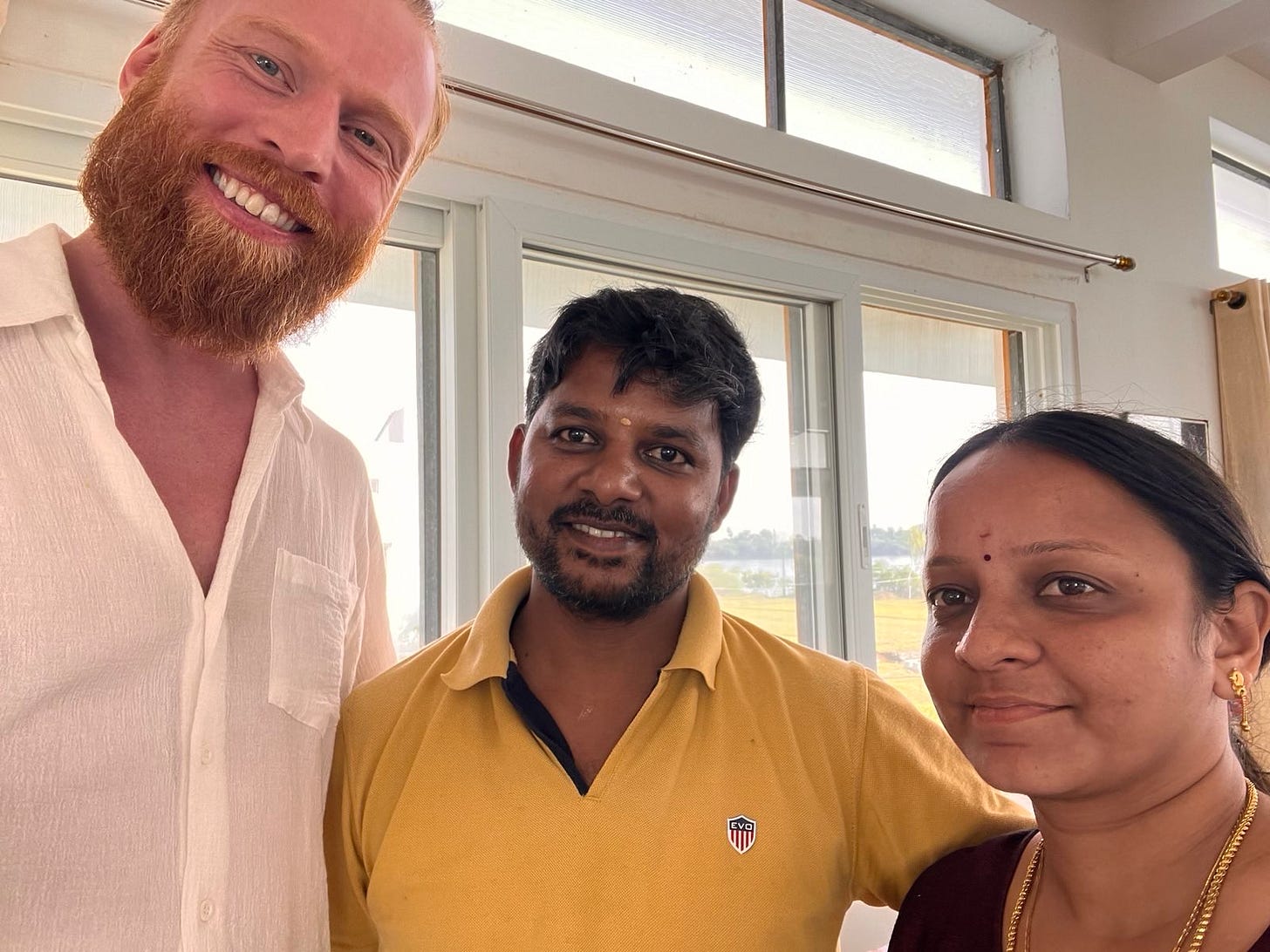Discover Spiritual Vortexes of the World: Tiruvannamalai (India)
The God That Turned Into a Mountain
Tiruvannamalai is quite a challenging place, and not only because it will take you some time to remember the name. That problem is easily solved—just call it Tiru. What is harder to manage is the primordial and cataclysmic energy you will receive here. I had to do some research to find those adjectives to appropriately describe my energetic experience, and I still feel like I am failing. Imagine the Balrog from The Lord of the Rings—Tiru’s energy feels like that. Not in an evil sense, just incredibly intense.
But just like Gandalf doesn’t die after the Balrog drags him into the abyss, the forces you experience here won’t kill you either, but they will deeply transform you. Gandalf the Grey will become Gandalf the White. The center of this transformative energy is the sacred mountain Arunachala, which is believed to be the manifestation of Shiva himself. FYI: You’re not allowed to climb to the top, and you can end up in prison if you try.
Arunachala rises in the middle of a landscape that is as flat as my chest, and yet geologists say that it is part of the Eastern Ghats, some of the most ancient landforms on Earth, dating back over three billion years. It is even older than the Himalayas, making it one of the oldest surviving geological formations.
Local hero and one of the most influential spiritual teachers of modern India, Sri Ramana Maharshi (1879–1950), spent most of his life here. He considered Arunachala to be the embodiment of the Supreme Self and often stated that merely being in its presence could lead to self-realization. His image is omnipresent, and all the local gurus refer to him and his teachings.
Tiruvannamalai itself encircles the mountain, but the true center of the city is Sri Ramana’s ashram. Spiritual seekers from all over the world, Hindus and more and more Westerners alike, come here to find healing and enlightenment. This intention makes the local Western community very dedicated and serious in their approach to spirituality. Gods are worshipped more intensely, spirituality is approached more earnestly, and mantras are sung more rawly than in places like Ubud or Pai, let’s say. The community is also more mature in a very plain way; most Westerners here are already in the second half of their lives, mixed with some families and fewer younger folks.
This energy of earnestness, worship, and dedication can lead to profound spiritual transformation, but it also has its downsides. One of the first questions you might be asked here is who your teacher is, and many people call themselves devotees of a specific guru. While I had amazing experiences attending local satsangs and teachings of wise men and women, this need for spiritual guidance that is fulfilled here can also be a very deep trap. The more you outsource your spiritual power, the more powerless you become. The moment you follow someone else’s path, you are entirely lost.
If you feel like coming here, you should. I don't think there are many places in the world where you can learn from so many profoundly connected teachers. It will definitely be transformative, but make sure you stay centered within your own knowing.
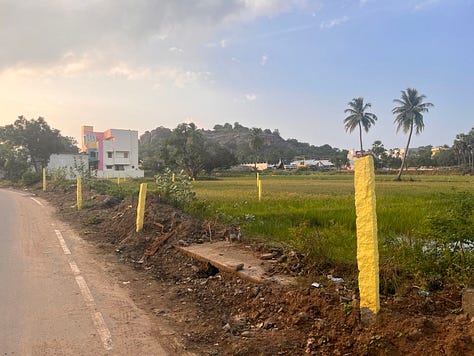


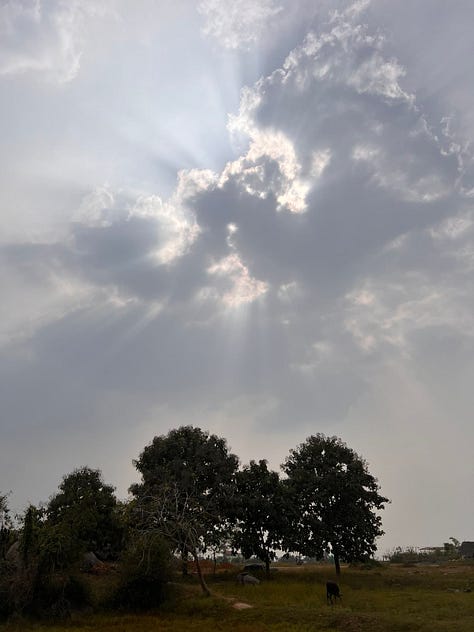

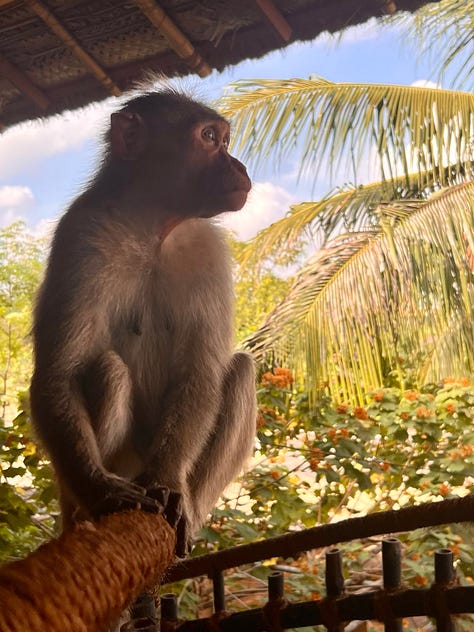

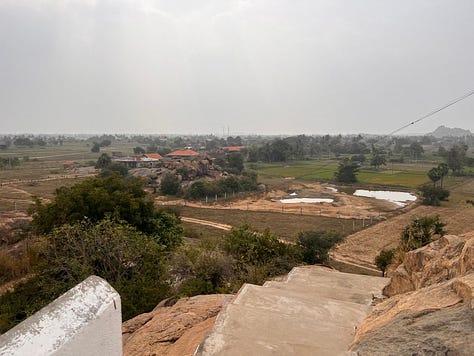
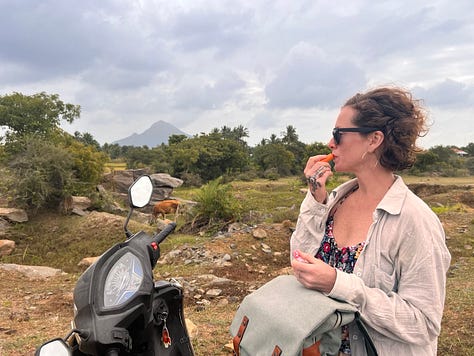
💡 Good to Know
Sri Ramana’s ashram is the center of the city and also the starting point for hiking to the caves where he spent decades in silence and meditation. It was here that his first devotees began seeking his presence and advice. Opposite the ashram, on the other side of the street, you’ll find the best chai tea in town, an ATM, and a supermarket.
Circumambulating Arunachala (Girivalam) is a profound experience I’ve been told. The 14 km path winds around the holy mountain, passing ancient shrines and ashrams, believed to dissolve karma with each step. Best start your walk early in the morning or late at night—the midday heat can be intense, and part of the route follows a busy main road. Under the full moon, the energy is electrifying, with thousands walking in silent devotion.
The best way to get around in daily life is by renting a scooter. Otherwise, you’ll need to find a local rickshaw to drive you, but to me, it felt unreliable to get one, and you always have to haggle over the price.
✈️ How to Get There
To get an e-tourist visa, go to the official website and make sure you’re relaxed and comfortable, it might take a while. It will ask for an address where you’ll stay in India and a reference person who vouches for you. Just use the address of a random hotel and invent an Indian name. At the airport immigration they might ask you if you do a teacher training or retreat - don’t mention if you do, it will just make things complicated.
I flew into Chennai and took a taxi—it’s about a six-hour ride to Tiru. Text Ali to pick you up; he was very reliable and a safe driver. (+91 861 058 5064)
When to Travel
🌿 Best Season: November–February
Pleasant weather (15°C–30°C / 59°F–86°F), perfect for Girivalam, visiting caves, and meditation.
Peak Spiritual Energy: December's Karthigai Deepam (Dec 4, 2025) – the grand fire-lighting atop Arunachala. Expect crowds but an electrifying atmosphere.
Full moon nights: Monthly Girivalam draws thousands, heightening the spiritual charge.
☀️ Avoid: March–May (Summer)
Scorching heat (40°C / 104°F+), making outdoor walks unbearable.
🌧️ Monsoon: June–October
Lush landscapes, and fewer tourists, but unpredictable rain can make trekking slippery.
For peak experience, December–January is ideal—just book early if visiting during Karthigai Deepam. If solitude is your goal, post-monsoon (September–October) offers peace with greenery.
🏨 Places to Stay
If you are like me and need a lot of peace and quiet, stay at Gia Mantra Global Village. It is located about 15 minutes out of town, but it is as quiet as India gets. They have a big swimming pool, gym, and badminton and pickleball courts. You can do yoga on the rooftop, get massages, and enjoy three meals a day.
If you like it a bit fancier, go to Sparsa. It is closer to town but still very peaceful and quiet, with a beautiful swimming pool surrounded by lush greenery.
If you are on a budget, go to Sunshine Guesthouse. I’ve heard it’s a great place to stay, and additionally, the community meets there—every Sunday at 10 a.m. for Kirtan, for example.
🍽️ Where to Eat
Dreaming Tree and Da Mantra are probably the nicest places to go. Both have delicious food (I love the Master Melt Sandwich at Da Mantra) and comfortable couches to hang out. In Da Mantra, they have a chess set available and sometimes show movies.
The German Bakery is more rustic, but they have delicious mashed potatoes and an amazing Apfelstrudel (apple strudel)—and I can tell, I’m German!
At Kavin’s Cafe, you get a nice view of the lake and surrounding area since it’s on a rooftop. The owners are so kind and will help you with booking buses whenever you feel like moving on. Try the chocolate cookies and muffins—they are delicious. The owner’s 13-year-old son makes them, and his mother proudly told me that he already bought himself an electric bike from his earnings.
If you crave great pizza and ice cream, there’s a place called Magheritaly on the other side of the mountain. Atmosphere-wise, it’s just an average diner, but the food is amazing!
🎭 What to Do
All restaurants have flyers on the wall informing you about events, but there are also WhatsApp groups where the community helps and informs each other. Just connect with me here, and I’ll hook you up.
If you crave more Western standards in restaurants and want to spend a couple of days by the beach, go to Auroville—by car, it’s just two hours away.
There is a nice little lake for swimming a bit out of town. It is basically just a hole in the ground from an old quarry, but the water is clean and pleasant.
I hoped you enjoyed reading this and maybe it even convinced you to go to Tiru. Leave a comment if you have questions, want to add some advice, or want to congratulate me on my first travel blog entry! 😜
Title Image by David Godman







